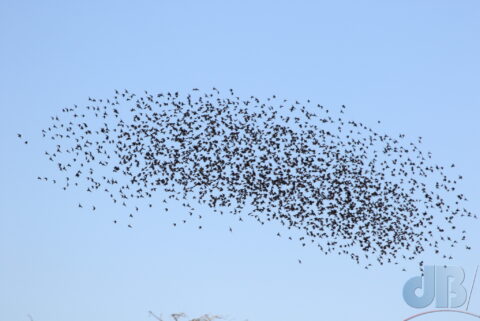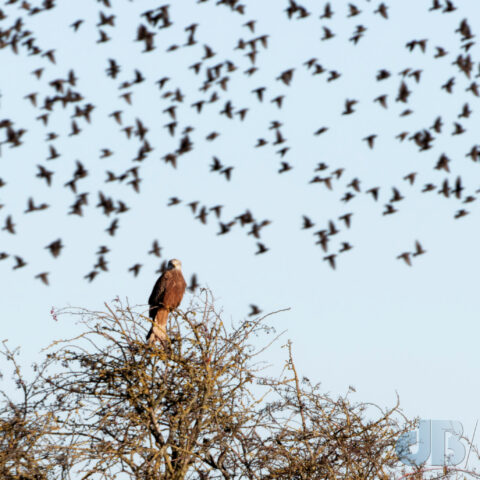TL:DR – Fundamentally, starlings murmurate because they enjoy it, it’s instinctive behaviour, but there will be reward feedback loops in their brains that drive the behaviour that’s almost beyond doubt. But, the phenomenon is in their instincts to help protect them from raptor predation.
I’ve talked about Starling murmurations several times before here. They are a fascinating, exciting, wonderful natural phenomenon with a lot to teach us about animal behaviour and perhaps even fluid flow! There are two spots on the outskirts of our village here in South Cambridgeshire where you might see a murmuration.

There is a reedbed in the balancing pond that supports drainage from one of the housing estates and then there’s a similar pond on the edge of the local recycling centre (rubbish dump). I’ve mentioned the Red Kites that frequent that site too in an update to an old article. It was while seeking out and finding 20+ Red Kites a couple of weeks ago that I noticed the Starling numbers were building on the same patch, with two to three flocks of several hundred birds swooping around the farmland that abutts the dump.

We walked there again yesterday so I could photograph the Red Kites again. We saw at least 20, along with a couple of hundred Redwing and dozens of Fieldfare, and a Buzzard harried by the Red Kites. There were a lot more Starlings, three fluxional flocks of several hundred each. At one point, hundreds were in the hedgerow when a raptor interrupted their chirruping and chatting and they whooshed into the air en masse and murmurated to distract and confuse the bird of prey.
I got a few photos one of which shows a large flock moving in unison. I estimate about 1500 birds in this photo and there were perhaps two other flocks of maybe about a half to two-thirds the size. I’d suggest that this patch has at least 3000 birds. It will be worth another visit towards dusk to see them bed down to roost among the reeds, also might be worth getting up at dawn to see them rise as a single mass from their roost. My estimate of 1500 in this photo was corroborated by a proper birder friend with far more experience of counting than I.